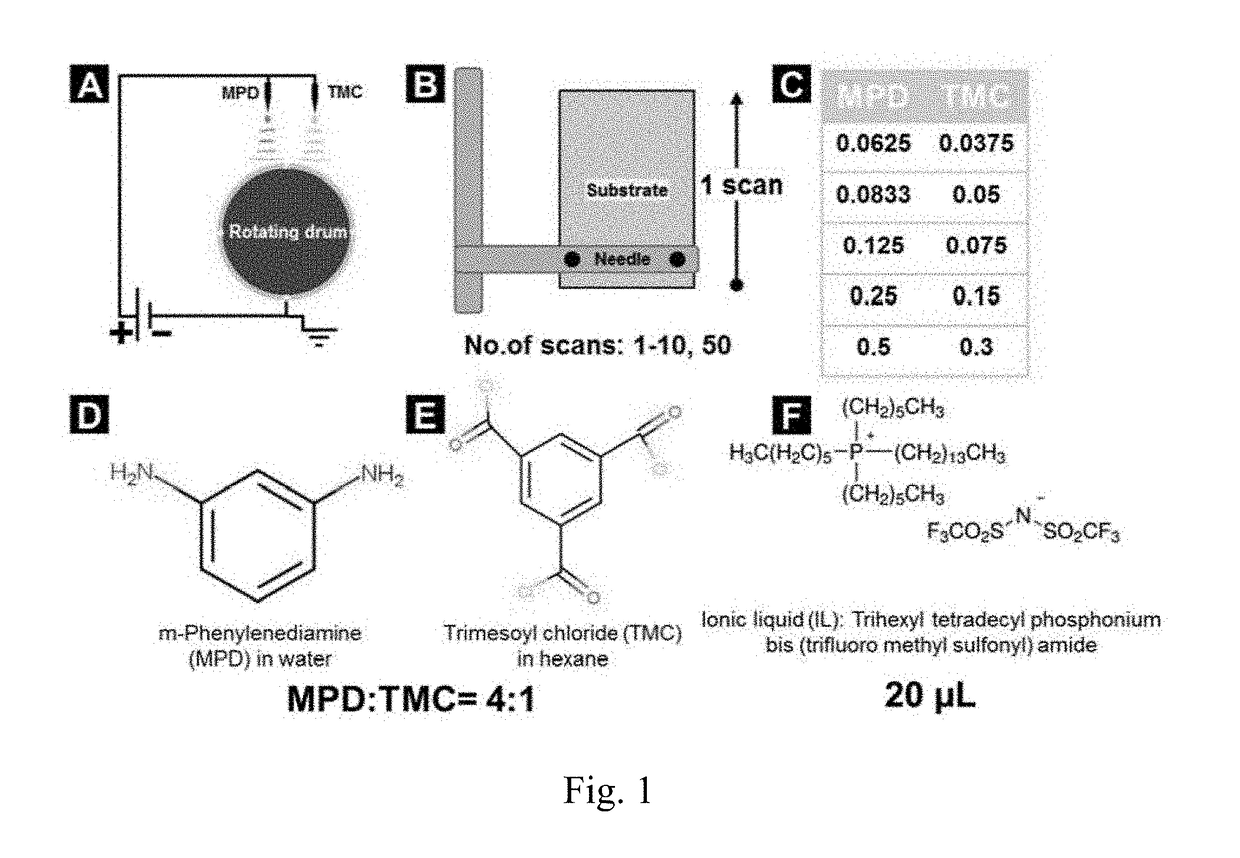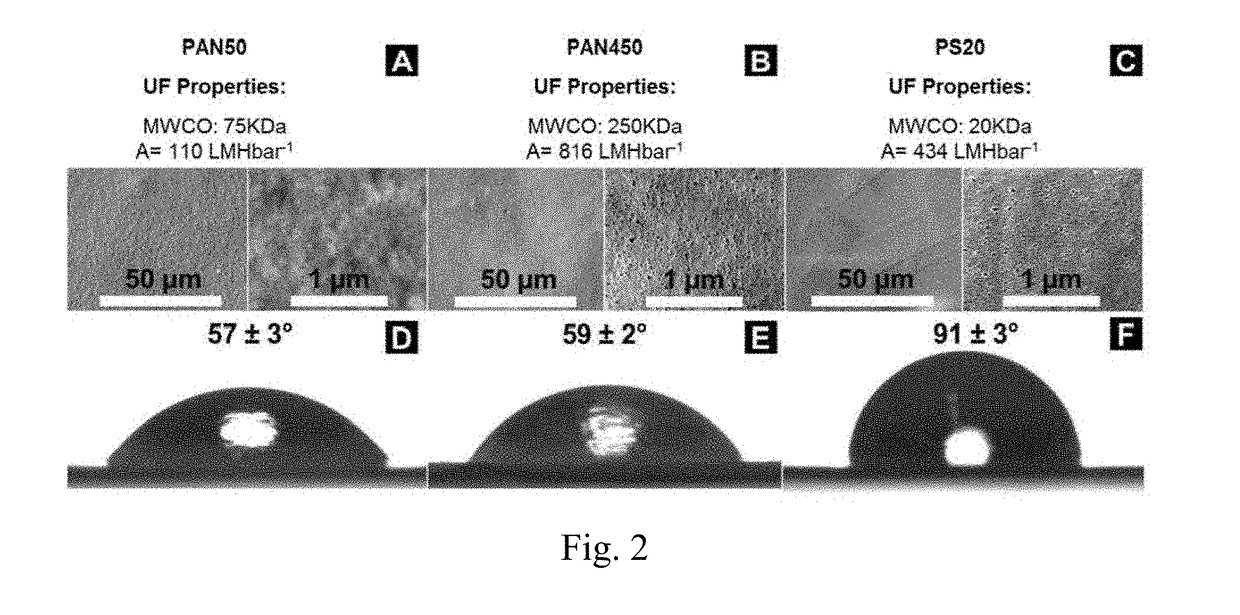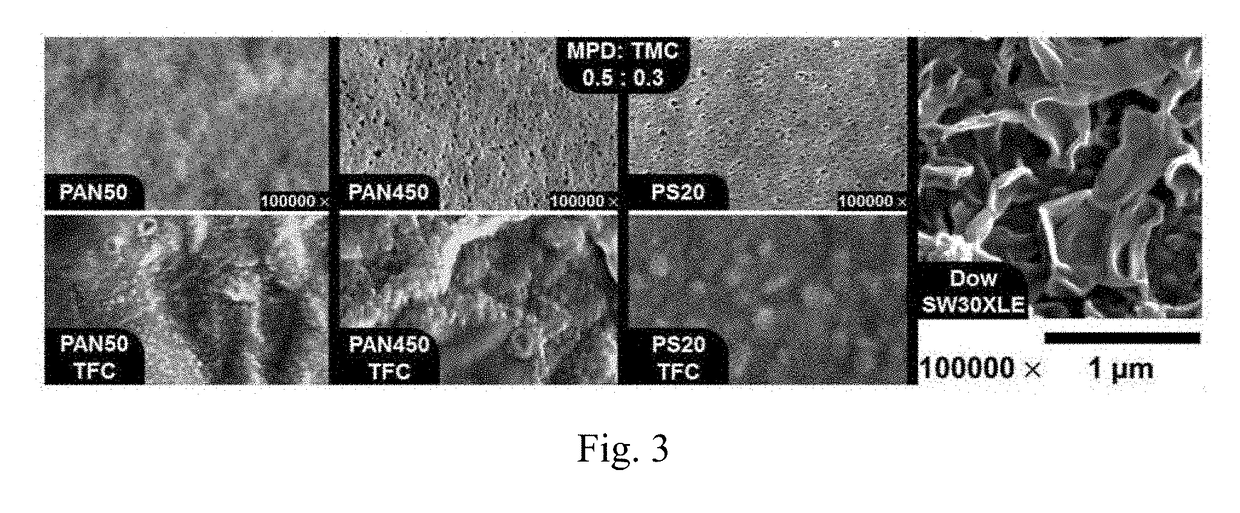Smooth polymer membranes and electrospray printing methods of making thereof
a polymer membrane and electrospray printing technology, applied in membrane technology, membranes, reverse osmosis, etc., can solve the problem of uncontrollable film formation reaction in the known ar
- Summary
- Abstract
- Description
- Claims
- Application Information
AI Technical Summary
Benefits of technology
Problems solved by technology
Method used
Image
Examples
example 1
Electro-Hydrodynamic Spray for TMC Membranes for Desalination
[0085]A diagram is presented in FIG. 1. A high voltage DC power source (Gamma High Voltage Research, Ormond Beach, Fla.) capable of generating 30 kV was connected to two stainless steel needles (26 gauge). The needles were hung from an L-shaped arm, which was attached to a stage as shown in FIG. 1. The distance between the two needles was kept at about 6 cm, and the distance between the needle tips and the rotating drum was kept below about 3 cm (though these distances are adjustable). The stage sat on a slider that was moveable horizontally using a stepper motor and a motor controller (Velmex, Bloomfield, N.Y.). The UF membranes (FIG. 2) were attached to an aluminum cylindrical rotating drum with a diameter of about 4 inches using tape. The drum was grounded to ensure a polarity and potential difference across the needle tips and drum.
[0086]Although a certain electrospraying system is presented in FIG. 1, many variations ...
example 2
3D Printed Polyamide Membranes for Desalination
[0098]In yet another example, polymer (e.g. polyamide) thickness and roughness have been identified as critical properties that impact thin film composite membrane performance for reverse osmosis. Conventional formation methodologies lack the ability to control these properties independently with high resolution or precision. An additive approach is presented which employs electrospraying to deposit monomers directly onto a substrate where they react to form a polymer (e.g. polyamide). Without wanting to be limited by theory, the small droplet size (see, for example, FIG. 12) coupled with low monomer concentrations result in polyamide films that are smoother and thinner than conventional polyamides, while the additive nature of the approach allows for control of thickness and roughness. Polyamide films are formed with a thickness that is controllable down to 4 nm increments and a roughness as low as 2 nm while still exhibiting good perm...
PUM
| Property | Measurement | Unit |
|---|---|---|
| RMS roughness | aaaaa | aaaaa |
| thickness | aaaaa | aaaaa |
| thickness | aaaaa | aaaaa |
Abstract
Description
Claims
Application Information
 Login to View More
Login to View More - Generate Ideas
- Intellectual Property
- Life Sciences
- Materials
- Tech Scout
- Unparalleled Data Quality
- Higher Quality Content
- 60% Fewer Hallucinations
Browse by: Latest US Patents, China's latest patents, Technical Efficacy Thesaurus, Application Domain, Technology Topic, Popular Technical Reports.
© 2025 PatSnap. All rights reserved.Legal|Privacy policy|Modern Slavery Act Transparency Statement|Sitemap|About US| Contact US: help@patsnap.com



